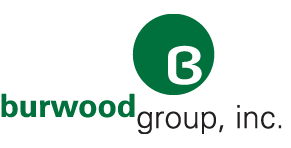How Contact Center IT Can Help Health Systems Compete for Patients
When it comes to healthcare, the importance of consumer experience is more critical than ever. The financial performance of health systems increasingly depends on converting consumers into patients and retaining patients who now have expanding options for urgent, primary, and elective care. A contact center is a critical component of an inviting front door for consumers—which is why forward-looking healthcare organizations are upping their contact center game.
Compared to other industries, the healthcare industry is home to the most sensitive and critical concern of all: a patient’s life and well-being. For this reason, patients have always demanded superior care from their healthcare providers. However, present-day patients have extended their expectations of superior patient care beyond clinic hours and the four walls of the medical institution. While most businesses care about "customer satisfaction" and the customer experience, there are very similar parallels in healthcare, you've got the patient experience to manage.
And that’s where today’s contact center technologies can help. The best healthcare contact centers focus on emotional connections, trust, relationship-building, and empathy. You can improve patient experience and engagement—while wisely leveraging contact center investments. A contact center and patient access IT strategy can drive hard ROI associated with patient acquisition and retention. And yet, the contact center is often overlooked as an important mechanism to achieve these objectives.
Contact centers are evolving to become more clinically relevant and strategic. Consider the possibilities, as increased communications options make it easy for consumers to connect with your services. Whether it’s two-way SMS, email, live chat, or social media messaging, contact centers aim to create an access point for every stage in a patient’s journey. Today’s technology also enables personalized interactions so you can target engagement strategies for option-seeking Millennials as well as physician-centric, loyal Boomers.
The status quo versus the art of the possible
Yesterday’s call centers are evolving from being mere phone-based call centers into integrated, omnichannel centers that seamlessly blend voice, chat, text messaging, social media, and even video. And as patient and provider, mobile apps proliferate, cloud-based omnichannel services are making it easier than ever to seamlessly integrate these interactive technologies into contact center operations. A contact center solution can help you streamline your patient outreach process by automating appointments, follow-ups, and aftercare reminders.
“One of the most powerful aspects of a forward-looking contact center is the potential to gather insight into the patient’s experience.”
One of the most powerful aspects of a forward-looking contact center is the potential to gather insight into the patient’s experience. Perhaps no other technology is as crucial to digital transformation as AI. Machine learning is widely used for automating processes and route interactions across the call center. These data points are generated from the consumer’s initial research and provider selection to scheduling appointments and medication reminders, as well as other forms of care coordination. Health systems that adopt omnichannel contact center technology can use that patient data to generate powerful and actionable insights about the patient's experience.
A forward-looking contact center IT plan can ensure that communications technology fits into a comprehensive approach to patient experience and engagement. Leaders from contact center operations, IT and Telecomm, and others responsible for patient experience can transform what was once considered to be cost-center infrastructure into a strategic revenue driver and increase patient retention.
Ready to Elevate Your Contact Center?
Let our experts create a roadmap to increase ROI and customer experience.





